Hyundai has joined Go Ultra Low, the government and industry-backed campaign that aims to highlight the benefits of plug-in and fuel cell electric vehicles.
Electric, Hybrid, Hydrogen Fuel Cell Car, News
Hyundai has joined Go Ultra Low, the government and industry-backed campaign that aims to highlight the benefits of plug-in and fuel cell electric vehicles.
Family Car, Hydrogen Fuel Cell Car, Electric, Events, News, SUV
Working together, the partners of the government-backed LHNE project have broken the record for the longest journey in the UK on a single tank of hydrogen, travelling 400 miles - and have also broken the longest continuous journey for an FCEV by travelling 6,096 miles over the course of six days.
The record was broken in the ix35 Fuel Cell car as part of the LHNE partners’ contribution to Hydrogen Week (March 11-18), designed to raise awareness of the significant benefits offered by FCEVs and their environmentally-friendly credentials.
The group of companies that comprise the project, which is led by Air Products, completed around 50 of laps of the M25 motorway, plus mileage to and from one of the four publicly-accessible hydrogen refuelling stations in the UK.
Hydrogen FCEVs produce no harmful tailpipe emissions with water being the only by-product. With range and refuelling times similar to those of petrol or diesel cars, they can be seen as direct replacements for conventional vehicles.
LHNE, co-funded by Innovate UK, was set up in 2012 to create the UK’s first hydrogen-powered transport system across London and the South East. It has delivered a new publicly-accessible, state-of-the-art fast-fill SmartFuel hydrogen refuelling station and upgraded a second to 700 bar pressure status.
The LHNE partners are now keen for the adoption of a range of hydrogen vehicle technologies, including fuel cells, to accelerate in the UK but one of the main challenges is the limited coverage of refuelling stations to support the vehicles. There are currently four publicly-accessible stations in the UK, including the two Air Products SmartFuel stations in London, and funding is in place for at least 12 to be operational in England and Scotland within the next 12 months.
Diana Raine, European Business Manager Hydrogen Energy Systems at Air Products, which has led the LHNE project, said: “It is fantastic to have overhauled the two records we aimed to beat this week. The fact that we have managed to drive 6,096 miles in under a week demonstrates perfectly the viability and usability of FCEVs. What we need now for accelerated adoption of hydrogen vehicles is for the Government to work with our industry to provide the right framework for the technology to become truly accepted by the public.”
Prices for the Hyundai ix35 Fuel Cell vehicle start from £53,105 OTR with part-funding from the HyFive project - saving customers nearly £15,000 off the un-funded on-the-road-price of £67,985.
Hydrogen Fuel Cell Car, SUV, News
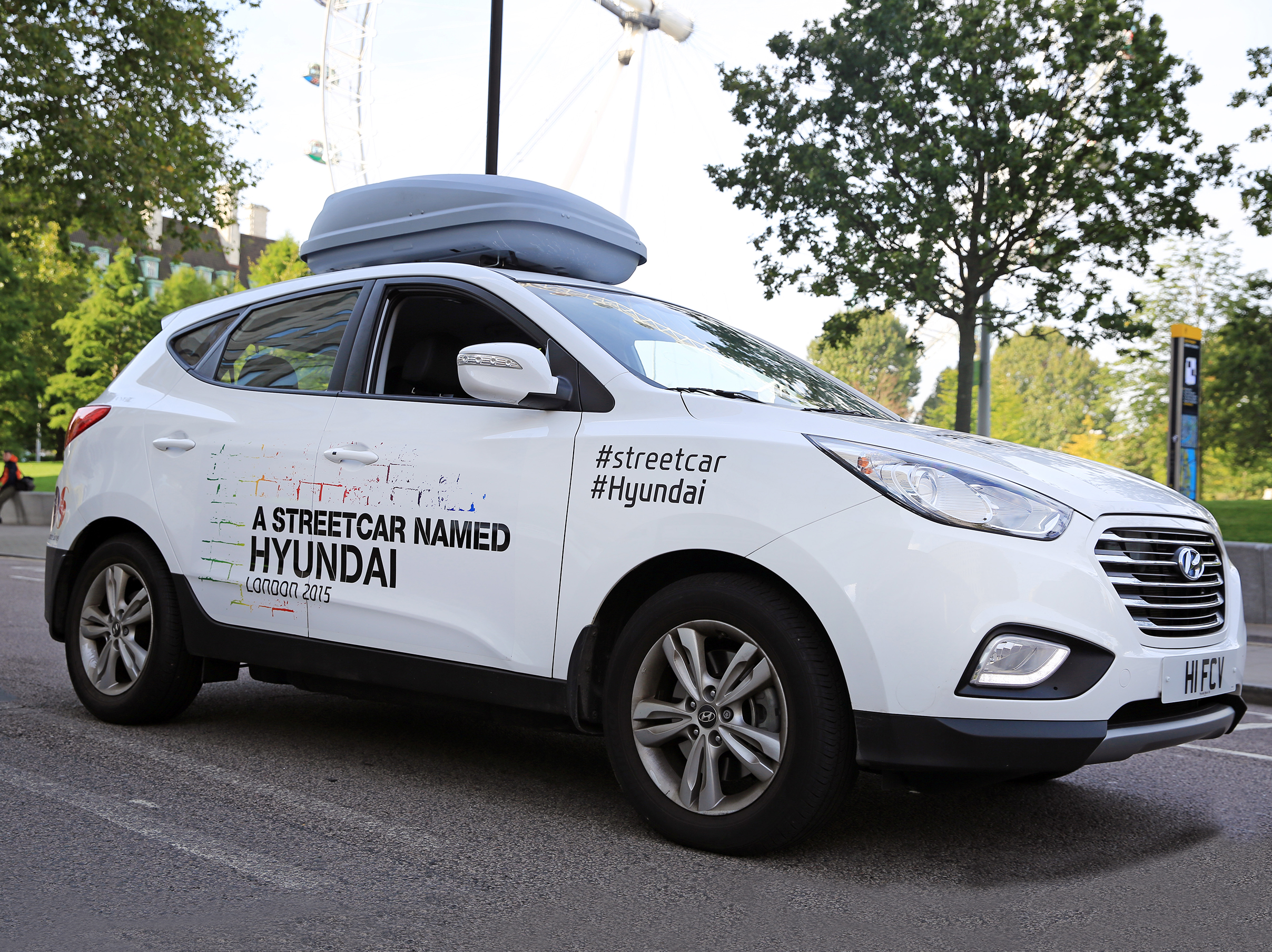
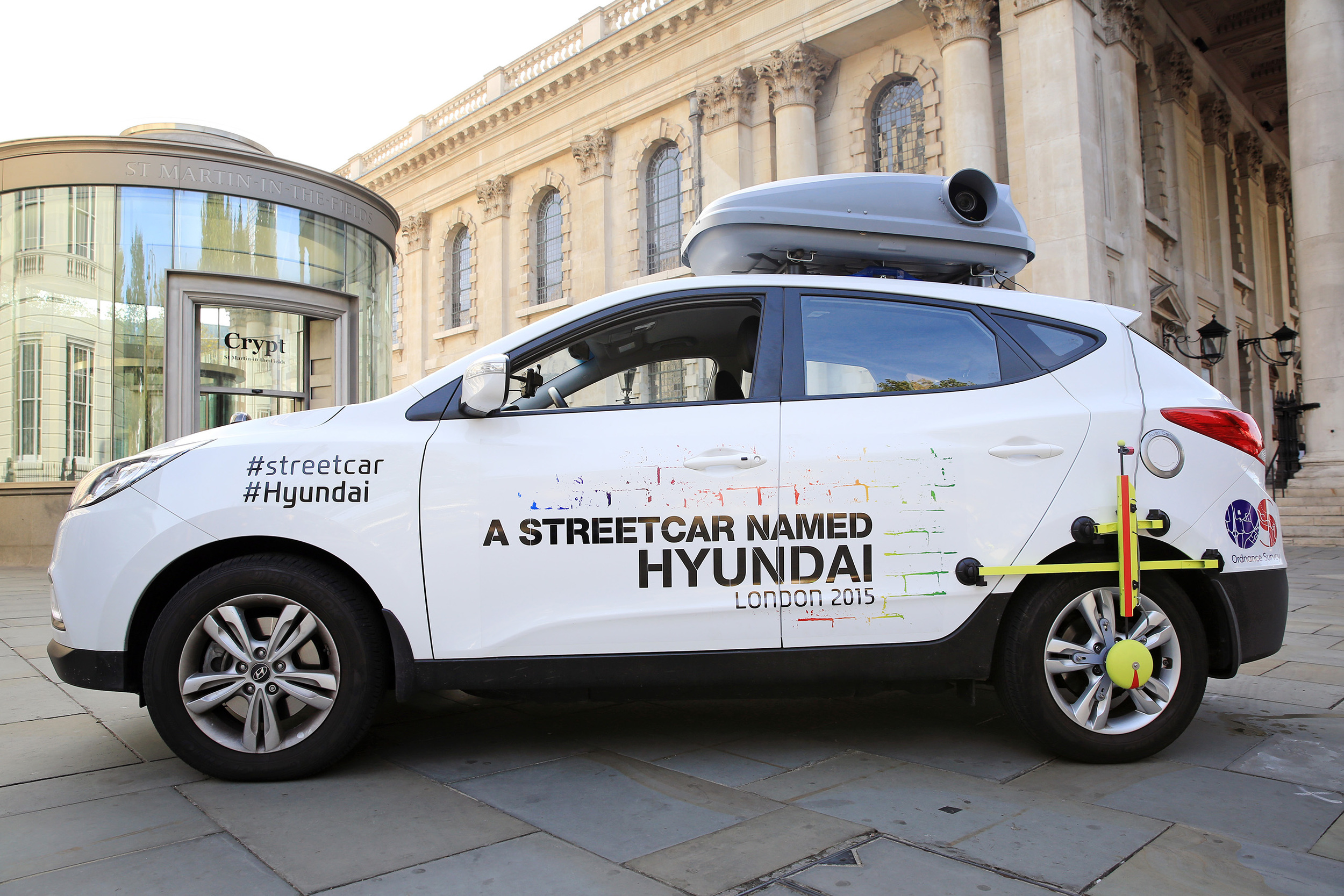
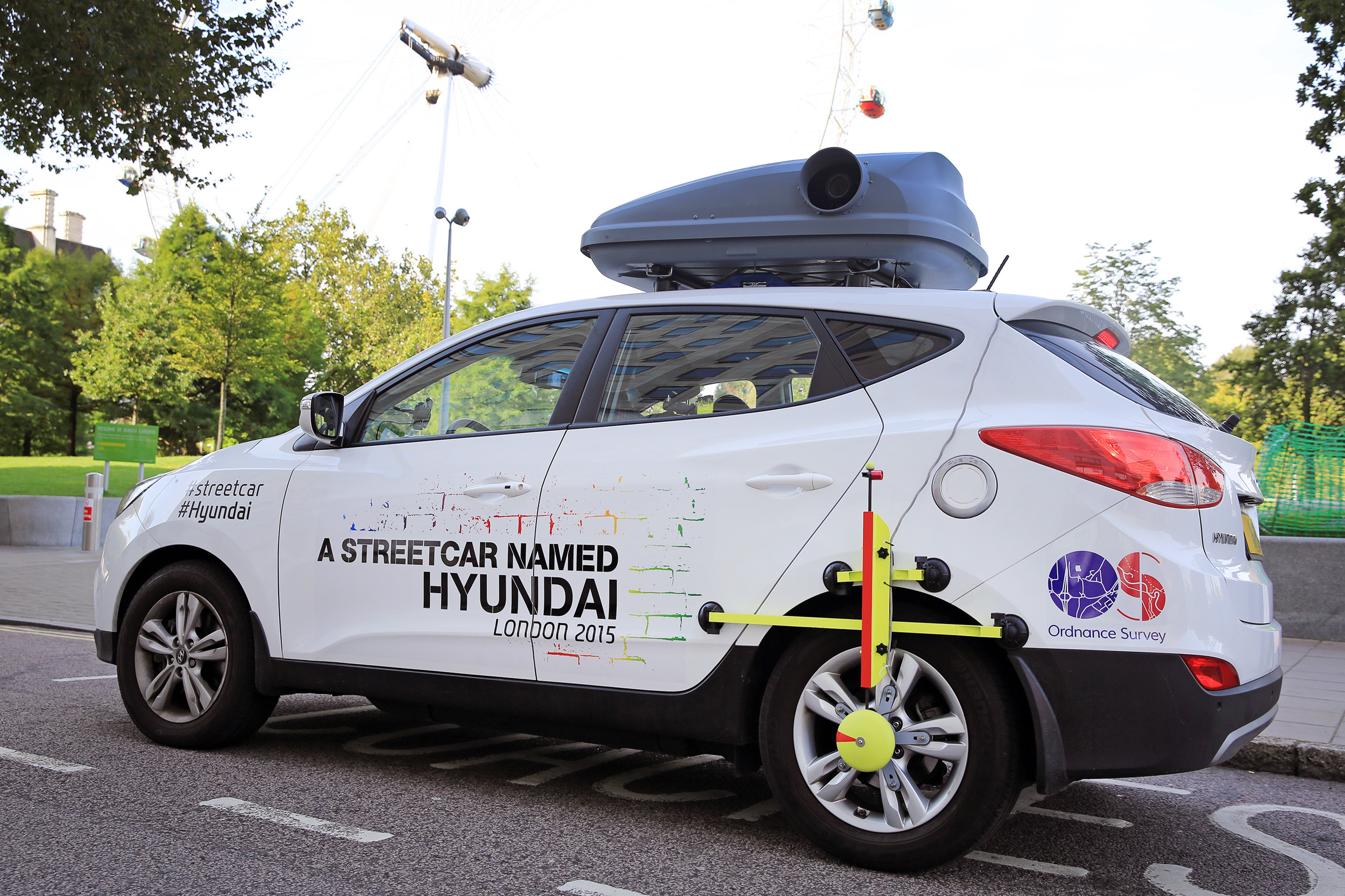
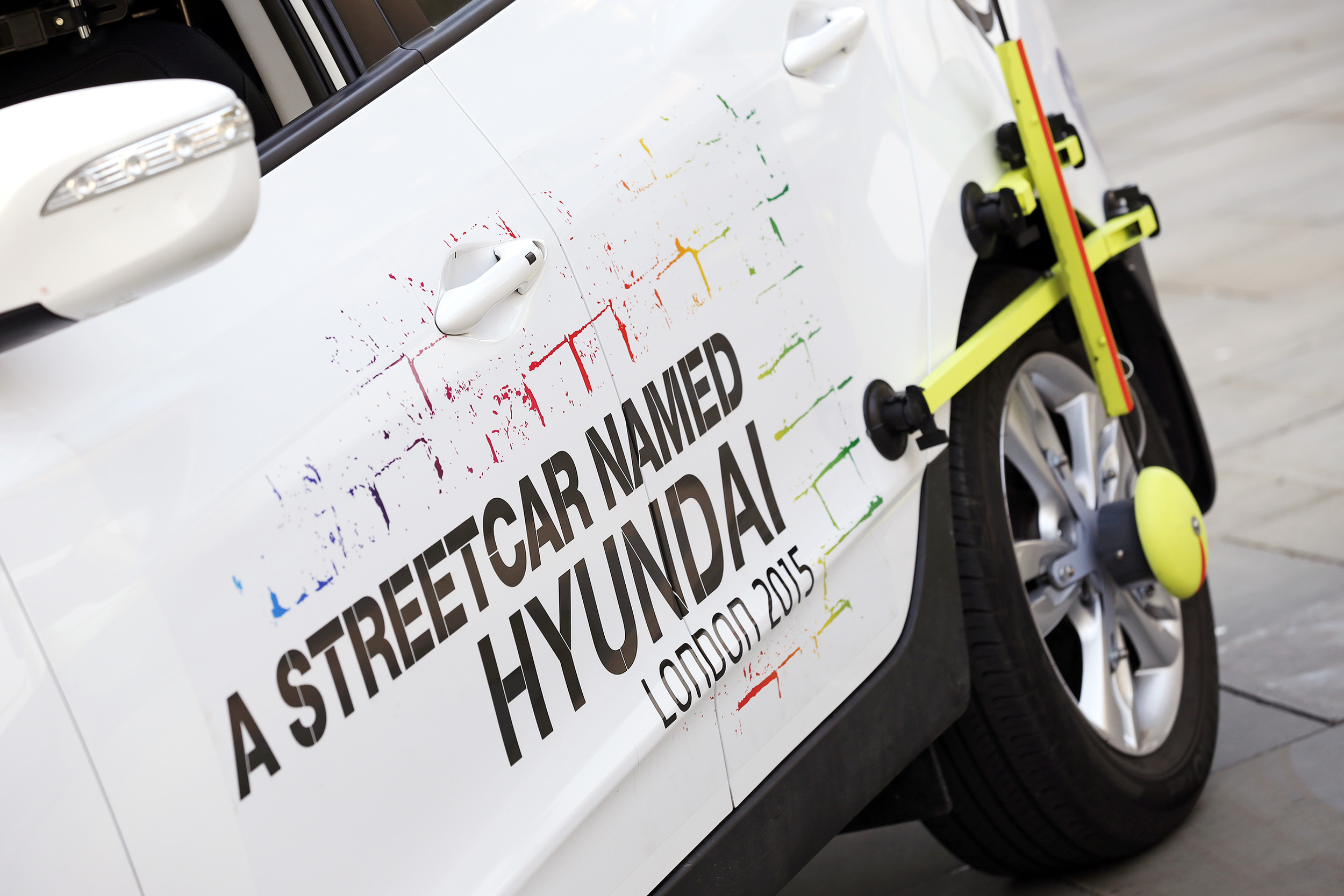

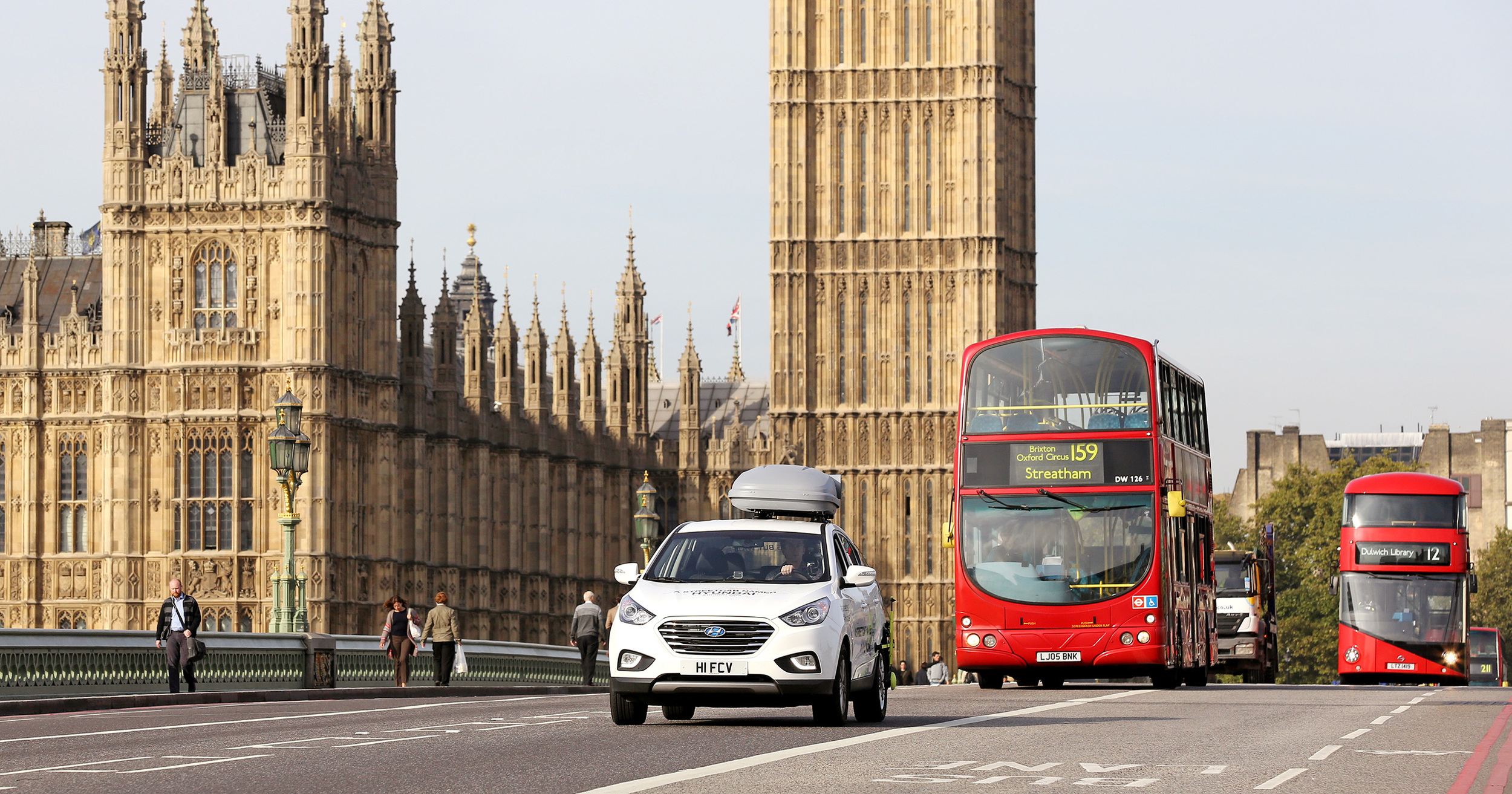
The idea involved driving, photographing and filming every central London street within the 2092 miles detailed in the famous Cabbie 'Knowledge'. Involving 127 participants, the challenge was created by London 2012's Ordnance Survey team to mark the 10-year anniversary of 'Hyundai Motor UK' and was completed in the Hyundai ix35 Fuel Cell, the world's first commercially available hydrogen fuel cell car.
London taxi driver and knowledge teacher of 30 years, Tony Norris said: "The Cabbie Knowledge is world renowned, unique to London and takes an average of 3-4 years to complete. But, this is the first time that the entire six-mile radius has been routed in this way as one continuous drive."
Hyundai created entirely new software to capture the drive, which controlled the camera shutter based on the car's speed, distance travelled and angle of travel to frame the entire journey photographically. The camera took pictures every 6-7 metres delivering 503,919 images - that's 207,000 MB of data. The special ix35 was designed to capture over half a million photos throughout the journey with the images used to create a 6m x 2m mosaic, a digital continuous image of all London's streets as well as a 200.5 second time lapse video to mark the UK company's 2005 heritage.
The final mosaic image depicts Oxford Street, which was voted as the most iconic street in London, and will go on display at City Hall in March 2016, as part of London's Hydrogen Week.
Deputy Mayor for Environment and Energy Matthew Pencharz said: "Energy-efficient transport like these hydrogen fuel cell cars are key to helping improve the capital's air quality and reduce carbon emissions. I'm pleased that Hyundai's project has produced such an interesting portrait of our city with their new hydrogen technology."
Tony Whitehorn, Hyundai Motor UK's President and CEO commented: "We're incredibly proud of how far Hyundai has come in the UK in the short space of 10 years. During this time our brand has been completely transformed through innovation, design and technology - all of which encapsulate the Streetcar Named Hyundai challenge. We are delighted with the results."
Hydrogen Fuel Cell Car, News, SUV

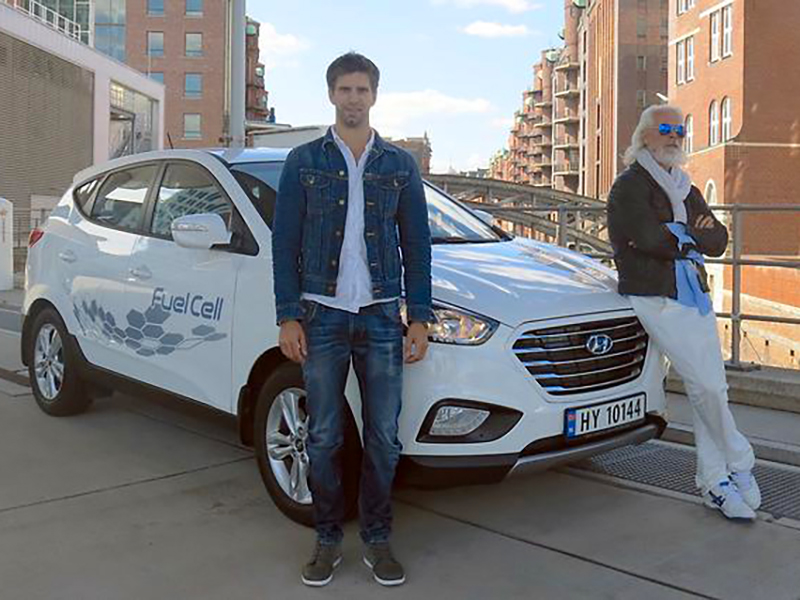
Arnt-Goran Hartvig (Sports Scientist) and Marius Bornstein (Master of Physics) travelled around the clock on public roads in Germany, emitting nothing but water vapour from the fuel cell electric vehicle. To achieve this distance, the two Norwegians covered the 300-plus kilometre route between Vatenfall's hydrogen station in HafenCity, Hamburg and a Shell hydrogen station in Sachsendamm, Berlin as many times as possible in 24 hours. Refuelling the car takes as little as three minutes, enabling the drivers to maximise the distance covered.
Their route included city driving as well as high-speed roads, testing the suitability of the Hyundai ix35 Fuel Cell for everyday use in all situations. "We wanted to see what the combination of a state of art fuel cell electric vehicle and ditto hydrogen refuelling station are capable of today. The result is stunning", stated the team after accomplishing their journey.
This accomplishment by the duo is the latest in a series of challenges to showcase the potential of fuel cell technology. In June last year the two chose the ix35 Fuel Cell to travel a record 700 kilometres on one tank of hydrogen. They have also driven from Oslo to Monaco, refuelling only at the hydrogen stations already installed along the 2,260-kilometre route.
The ix35 Fuel Cell is fitted with a 100 kW (136 ps) electric motor, allowing it to reach a maximum speed of 160 km/h. It produces no harmful emissions - only water vapour comes from the tailpipe - and has an official driving range of almost 600 kilometres on one tank of hydrogen.
Thomas Schmid, Chief Operating Officer at Hyundai Motor Europe, commented: "This endurance drive highlights both the practicality of our fuel cell electric vehicle's long driving range and the environmental credentials of our technology. Our Fuel Cell programme has already delivered many world firsts, so it is fitting that the Hyundai ix35 Fuel Cell has once again delivered a new benchmark."
Prices for the Hyundai ix35 Fuel Cell vehicle start from £53,105 OTR with part-funding from the HyFive project - saving customers nearly £15,000 off the un-funded on-the-road-price of £67,985.